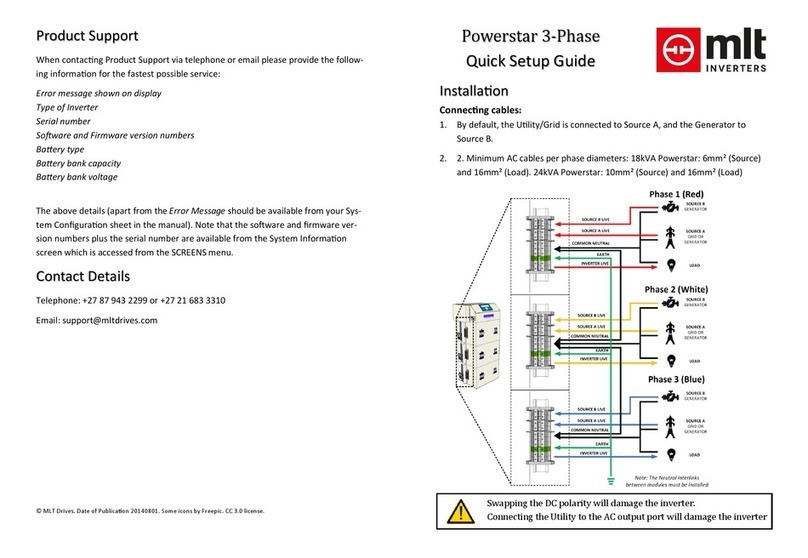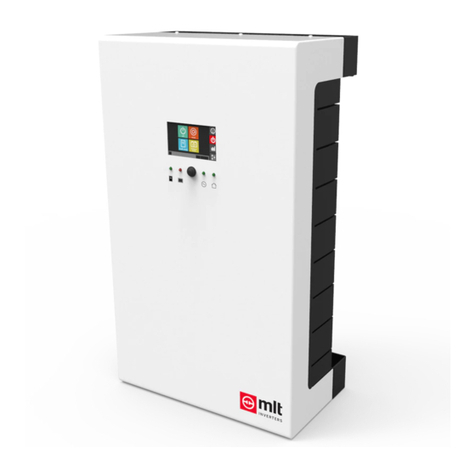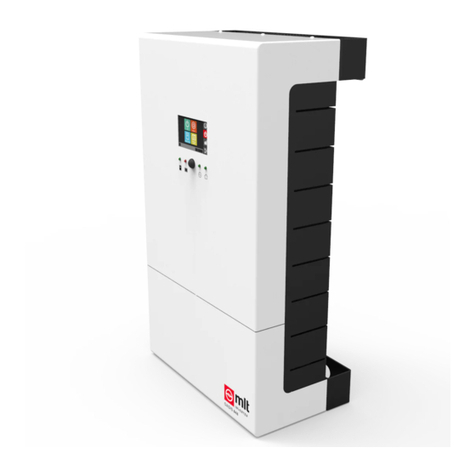POWERSTAR 10H USER MANUAL PAGE 5
Figures
Figure 1. De-rating the PowerStar inverter output power at high altitude ......................................10
Figure 2. Identifying parts of the Powerstar 10H................................................................................11
Figure 3. A typical layout of a single-phase Powerstar 10H installation showing the inverter (7),
the battery bank (10), the battery cable fuse box (9), the AC Bypass Box (3), and an optional
MPPT.....................................................................................................................................................13
Figure 4. Minimum clearance distances around a unit or between units.........................................15
Figure 5. Permitted mounting orientation..........................................................................................18
Figure 6. Wall mounting.......................................................................................................................19
Figure 7. The AC and DC cable entries on the Powerstar and the location of the On/Off switch.
...............................................................................................................................................................19
Figure 8. A figure showing the AC and DC terminals on the Powerstar and the location of the
PCB socketsusedforCANcommunication,auxiliary relay control,and externalcurrentsensing.
...............................................................................................................................................................20
Figure 9. RJ45 plug pin numbers..........................................................................................................24
Figure 10. An image showing the position of the Powerstar 10H’s touch screen display, the
status LEDs, the start/stop button and the on/off switch..................................................................30
Figure 11. The HMI’s four main screens. Namely the dashboard screen, the control screen, the
charts/info screen, and the settings screen. The navigation bar is shown onthe right side of the
screen. Use the buttons in the navigation bar to move between the screens.................................31
Figure 12. The touch screen display’s screen navigation icons..........................................................31
Figure 13. The HMI’s advanced setup sub-screens. To view the full set of user settings select
the all user settings checkbox. Note most of the settings are passcode protected. To edit a
setting enter the default password (1918) before selecting one of the checkboxes. To access
the advanced table selection screen select the advanced selection checkbox...............................35
Figure 14. An overview of the screens and menus available on the touch screen display..............36
Figure 15. The icons used withthe status LEDs..................................................................................38
Figure 16. The BMS Info screen...........................................................................................................41
Figure 17. The HMI’s Solar Info and Inverter Set screens ..................................................................41
Figure 18. The IP address of the machine is shown on the HMI’s System Info screen. ...................43
Figure 19. An example of MLT Portal’s version of the Dashboard Screen........................................44































